-
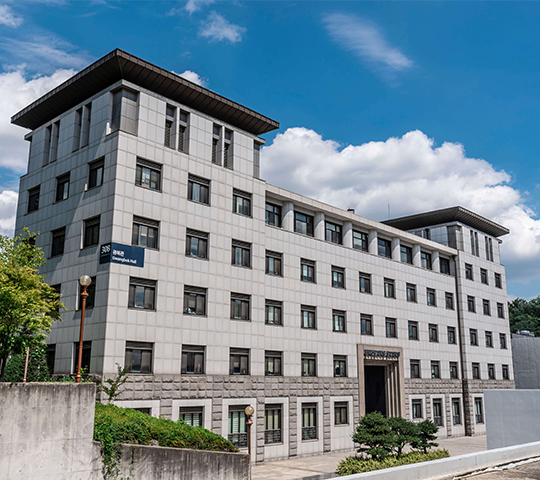 Gwangbok Hall Details
Gwangbok Hall Details close
closeThe old Gwangbok Hall was a 3 storey modern brick building built in May 1956 from mostly materials donated by the 5th Air Force and the efforts of the University and was named the Gwangbok Hall in 1958 at the 2nd Anniversary Ceremony. It was in commemoration of Eok-Gyeom Yu, Choon Ho Lee, Myo Mok Lee, Seung Kuk Hong, the abducted Widang, In Bo Jung, Soon Tak Lee Professors and the honorary President Dr. L. George Paik for protecting Yonhi during the Japanese Occupation.However, due to the deterioration the building was reconstructed in May 2000 with the funding of the Alumni Association and the efforts of the University and opened in January 15 2002. The building has 5 floors above ground with two basement floors and the total area of the building is 11,857.85㎡.. It is currently being used by the Law School.
-
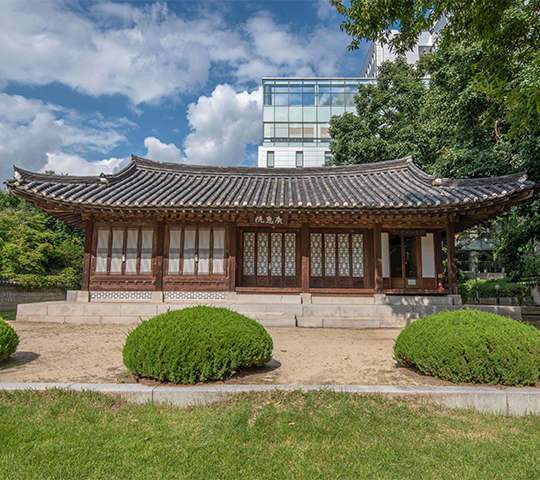 Gwanghyewon Details
Gwanghyewon Details close
closeAs part of the Yonsei Centennial Project, restoration of the Gwanghyewon Building ( Widespread Relief House) began in May 1986. Situated next to the Sukyeongwon Tomb, it was unveiled at a ceremony in 1987. As the first modern Royal Hospital in Korea, and the precursor of today’s Yonsei University Health System, Gwanghyewon first opened in1885 as a general hospital, with 40 sickbeds, an operating room, pharmacy, and facility for outpatient examinations. Today it is the site of the “Yonsei Archives,” where visitors can view artifacts from the early years of Yonsei University.
-
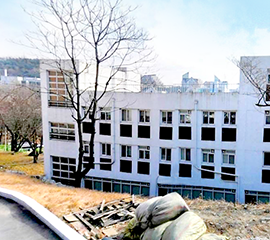 Miwu Hall Details
Miwu Hall Details close
closeMiwu Dormitory was built in June 1972 with the 50,000 dollar donation received from the American Union Presbyterian Missionary Church and was named Miwu to mean a place to make beautiful friendships. In October 31, 1979 it was renovated with concrete and brick walls to become a 3 storey building with one basement floor with a total area of 2,072.72㎡ and was used as a dormitory for female students.
After the construction of the Muak 2 Dormitory in 1993, it was used as a dormitory for the football and ice hockey team and after the construction of Muak 5 Dormitory (Dormitory for athletes) remodeling took place in December of 2005. As the purpose of the building changed to housing the Newspaper and Broadcasting System station, Social Education Center, and National Management Institute, the name was changed to Miwu Hall. -
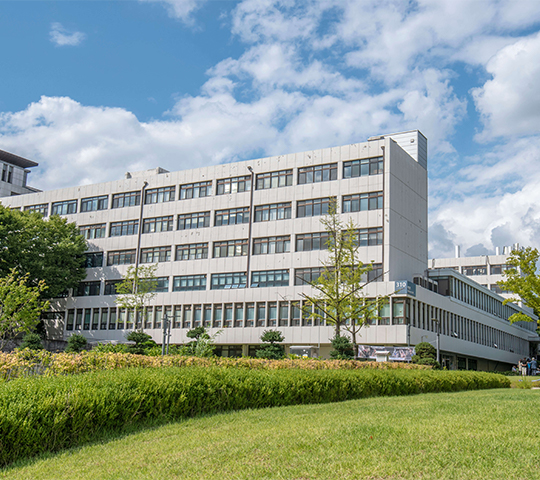 Baekyang Hall Details
Baekyang Hall Details close
closeBaekyang Hall was constructed with the founding spirit of Yonsei and to provide a place for students to conduct research on theories of business and effectively put them into practice. To create a novel and active learning environment on campus as well as to contribute to Korea’s economic development,
the construction of Baekyang Hall began in April 19, 1967 and the 6,261.13㎡ building was completed in May 10, 1969.The southern part of the building was extended by 2,419.83㎡ in August 1970 and was completed by May 8, 1971. The third phase of construction started in April 1982 to extend the northern part of the building by 1,477.91736㎡ and was completed on December 21, 1982. Since then, an additional floor of 538.84㎡ was added on the second floor to make room for the Admissions Office and was completed in late August 2005. -
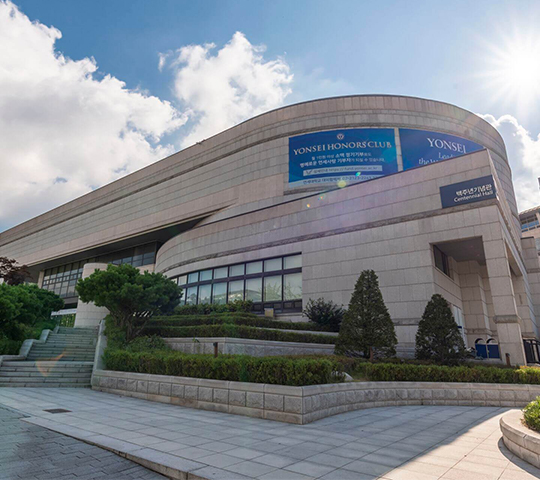 Centennial Hall Details
Centennial Hall Details close
closeTo commemorate the 100th anniversary of the University and to honor the spirit of Yonsei, this hall was built by the joint efforts of the alumni association, faculty members, prominent figures in society, parents and students.
The construction started in August 1986 and was completed in February 1988. This elegant and modern hall which is used as a museum and a concert hall has three floors above ground with one basement floor and covers a total area of 9,917.36㎡.
The museum has 10 exhibition halls, a small lecture room that can hold 110 people and 4 vaults for storing valuables. The concert hall has 900 seats and lobbies on each floor. -
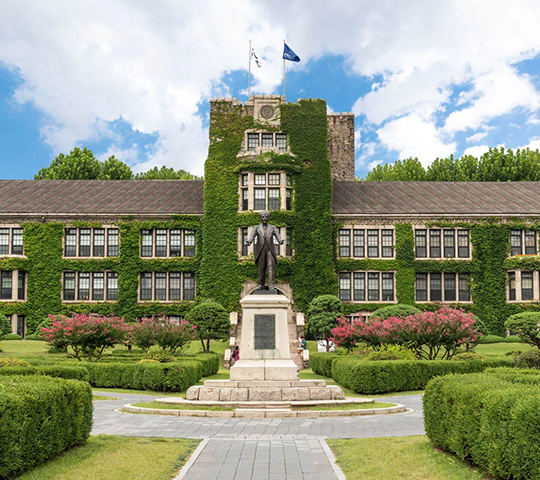 Main Building Details
Main Building Details close
closeThis Building was built in 1924 with the donations of John Underwood to commemorate his brother Dr. Horace Grant Underwood (aka Won, Do Woo), the first president and founder of Yonhi College. The building area of this four-storied stone building is 693.36㎡ and the total area is 2,897.12㎡. It was occupied by the College of Liberal Arts until March 1982 when the President’s office, Planning Office, Administrative office and the Academic Affairs office moved in.This historic landmark has been designated as a national cultural treasure no. 276.
-
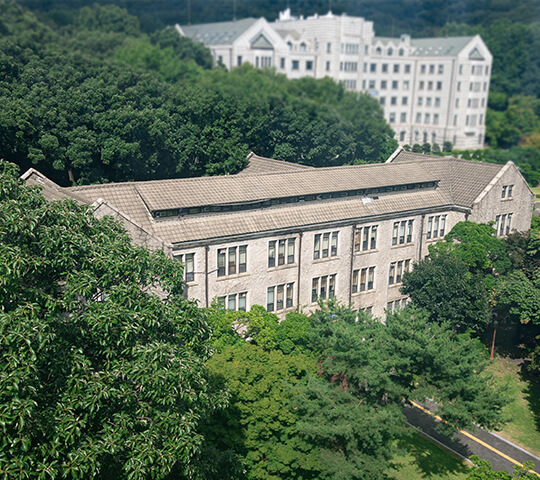 Billingsley Hall Details
Billingsley Hall Details close
closeThe Billingsley Hall located behind the Yu Eok-Gyeom Memorial Hall started construction in April 15, 1968 and was completed on October 30th of the same year. The building was funded by the American Methodist Woman’s Missionary Union and the University’s Foundation. It was occupied by the College of Human Ecology, but with the construction of the Human Ecology Hall it is now being used by the Graduate School of Journalism and Mass Communication and the College of Social Sciences.
-
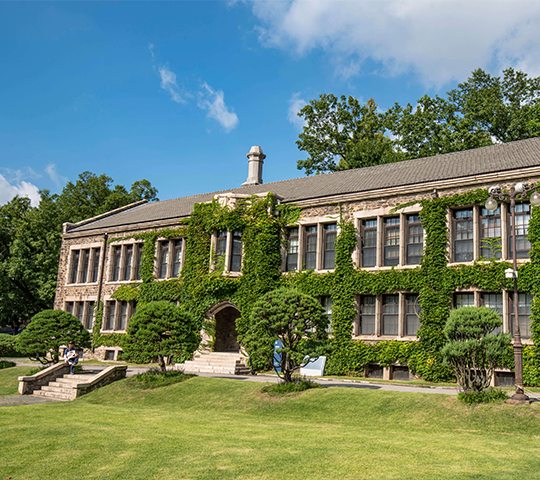 Stimson Hall Details
Stimson Hall Details close
closeThis building was constructed in 1920 and was the first building to be built on the Yonsei Campus. It is a double-storied stone building with a total area of 1,370.45㎡ and the building area being 435.54㎡. It was built with the donations from Mr. Charles M. Stimson from Los Angeles, California, USA and was used as the Main Building of the University, but is currently being occupied by Graduate schools and the External Affairs and Development Office . It was designated as a cultural treasure #275 (Historical landmark) in September 25, 1981.
-
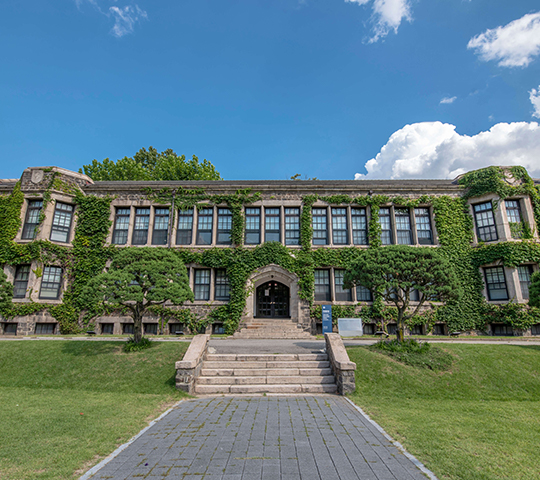 Appenzeller Hall Details
Appenzeller Hall Details close
closeWith donations from Jaeil Methodist Church in Pittsburg, Massachusetts, USA, the Appenzeller Hall was constructed in 1924 and is currently occupied by the Graduate School of Social Welfare. The total area is 1,558.98㎡ with the building area being 434.18㎡. It is a three-storied stone building and has been designated as a cultural treasure #277 (Historical landmark).
-
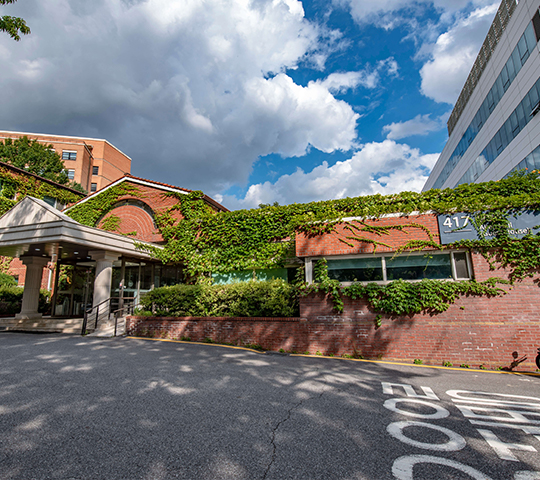 Allen Hall Details
Allen Hall Details close
closeAs part of the 100th anniversary of Yonsei, the old Youngbin Building was demolished and a new modern building of 1,051.90㎡ in a total area of 1,656㎡ started construction in May 1986 and was completed in April 1987. There are 8 small and medium conference rooms such as the Muak hall and 7 bedrooms. The building was given the name Allen Hall to commemorate Dr. Allen in founding the first medical facility, Gwanghyewon, in Korea.
-
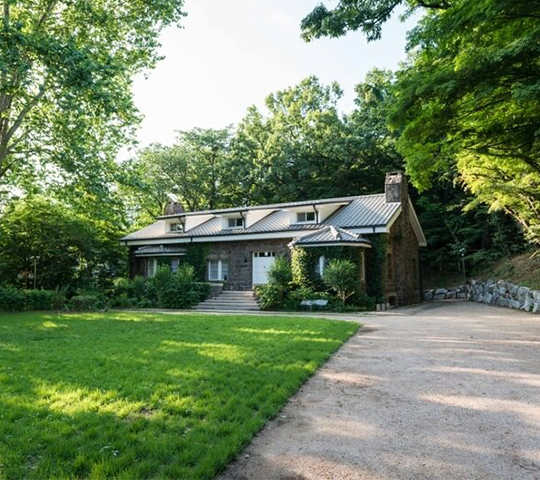 Underwood Memorial House Details
Underwood Memorial House Details close
closeIn honor of Underwood, the founder of Yonsei University, and his family who contributed to modern education and the development of South Korea, their residence in Yonhidong was remodeled and preserved. To remember the virtue of the founder and his family, and to tell future generations of their story, the interior of the residence was restored to what it looked like in the 1930s. The residence opened in October 28 2003 and exhibits pictures and books of the Underwood family.
In May 13, 2006 additional articles of the Underwood family such as undisclosed photographs, videos and books were donated from Dr. Won, Il Han’s collection and opened as the Underwood Memorial House with exhibitions of ‘Underwood’s Life’, ‘Korea and Underwood’ and the ‘Literature Room’. -
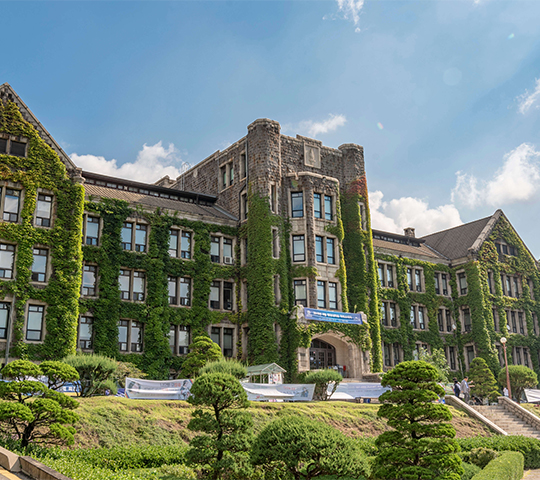 Yonhi Hall Details
Yonhi Hall Details close
closeYonhi Hall was built in October 1956 by the 5th American Air Force and the University. It is a 1,400.99㎡ building in a total area of 6,660㎡ and is currently being occupied by the College of Social Sciences and the Graduate School of Public Administration. The Yonhi Hall holds the cooperative spirit of the US aid in building the Yonhi Hall. The Hall commemorates the founders in lighting the torch of truth, enhancing tradition, seeking to realize world peace and freedom of justice and creating culture through Science education. It represents the spirit of truth and freedom.
It was named Yonhi Hall to remember the name Yonhi when “Severance” and “Yonhi” joined in 1957. -
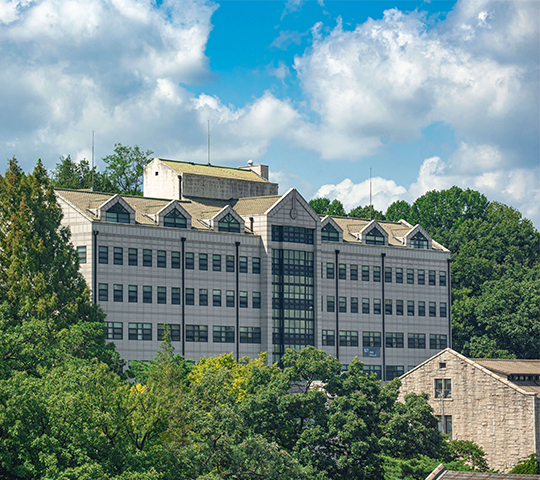 Widang Hall Details
Widang Hall Details close
closeWidang Hall was built to restore the research facilities and resources of the Jonghap building which were damaged during the protests. The building received funding from the government and from the donation campaign that ran for one year from August 20, 1996 to August 19, 1997. Alumni members, parents, faculty members, undergraduate and graduate students, corporations and ordinary citizens in the form of civil groups participated in the donations. The 6-floor building with one basement floor covering a total area of 8,370.25㎡ started construction on May 29, 1997 and completed on August 24, 1998. It is currently occupied by the College of Liberal Arts, Institute of Korean Studies, Center for Language and Informatics Development, the art and science magazine room and the Muak Seodang. To honor Widang Jung In Bo’s establishment of Korea’s leadership and promotion of Korean traditional culture, the building changed its name from 2nd Humanities Building to the Widang Hall in 2001.
-
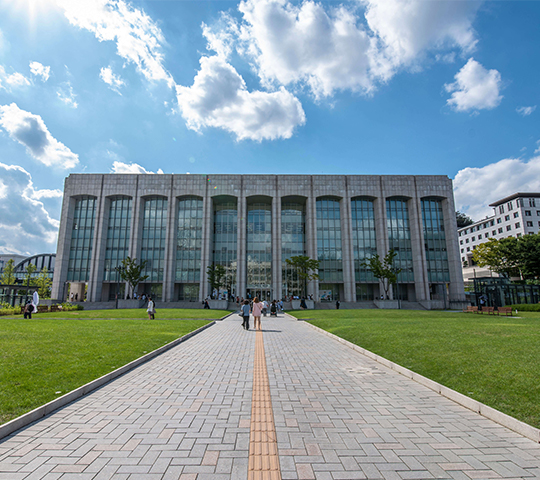 Central Library Details
Central Library Details close
closeAccording to the ‘Master Plan towards Yonsei’s 100th year’ the Central Library started construction in May 1977 and was completed on March 30, 1979. This building represents Yonsei’s mission and responsibility towards education and is the source of academic development and cultural creativity.
The library area was 15,692.56㎡, in a total area of 17,223.14㎡ with 4,600 seats and the capacity to store 1 million books. The building was later expanded to a total area of 19,358.68㎡ in 1992. The library has 5 floors above ground with a roof floor and one basement floor. It is the biggest civil stone architecture in Korea. The computer system, cooling and heating system and other equipments inside the library were provided with the one million dollar aid received from the USA.
show mobile menu
mobile menu
